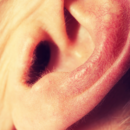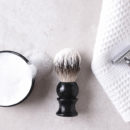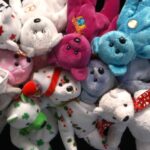
It was the late ‘90s, and the Beanie Baby craze was in full swing.
Everyone wanted the adorable plush toys. Some people were convinced that the stuffed animals would be worth much more in the future and invested thousands into their collections.
But then the investment bubble popped.
Nowadays, you can find Beanie Babies at flea markets and garage sales going for mere dollars, nowhere near the thousands of dollars people thought they would be worth.
However, there are a few that are of high value to collectors. Could one of these be sitting in that bin of Beanie Babies you stuffed in the attic years ago?
Keep reading to find out.
Backstory
Ty Warner started selling Beanie Babies in 1993 when he released the original nine stuffed animals. These included classics like Patti the Platypus and Flash the Dolphin.
Beanie Babies originally sold for only $5 (around $9 by today’s standards).
In 1995, Warner began retiring specific Beanie Babies, creating scarcity. People were willing to pay more for retired stuffed animals and within two years, a craze had swept the nation.
And just as quickly, the craze had ended and many people were left regretting the amount of money they had invested in Beanie Babies.
As mentioned earlier though, there are a few that can still get you a good amount of money. But what makes these specific stuffed animals worth more?
Valuation
There are several factors involved in what makes a Beanie Baby valuable. One of these is which generation it was made in.
For the first several ‘generations’ of Beanie Babies, there weren’t a ton made. This makes Beanie Babies part of those generations rarer.
After those first few generations, Beanie Babies were more mass-produced, which lowered their value.
Keep in mind that two Beanie Babies of the same model (two Pattis, for instance) can be from different generations and therefore, have different values.
A certificate of authority can also raise the value of a Beanie Baby. This certificate says the stuffed animal was officially certified as being authentic.
These are important because in 1997, fake Beanie Babies started appearing in the market.
Provenance can raise the value of a Beanie Baby. Provenance essentially means that the Beanie Baby has a significant background.
One of the most critical factors in Beanie Baby value is if it has an error. If the hanging tag has typos or misspellings, the value of the stuffed animal can go up since Beanie Babies with these errors are rarer.
Lastly, if there are a lot of various forms of the Beanie Baby, that can also increase the value.
Keeping Them in Good Condition
This information might be coming a little late if your kids actively played with their Beanie Babies. Just in case though, here’s what collectors want in their Beanie Babies.
For the rare Beanie Babies (the ones that can actually make you money) to have any value, they need to be in very good condition.
This means that they’ll still have their hanging tags (the tags that went in the plush toy’s ears/paws/flippers) with no wear on them. They also should have their “tush” tags, which are the tags that were usually attached to their bottoms or legs.
You also don’t want the stuffing in the children’s toys to have settled.
The Valuable Ones
Before you read on, you should be aware that there’s no guarantee that you’ll make a ton of money from selling these stuffed animals.
However, if any of your kid’s old Beanie Babies are going to be worth more than a few dollars, these are some of your best bets.
Patti the Platypus
Patti was part of the original nine Beanie Babies. She can be valuable, but here’s the catch: she’s most valuable if she’s magenta.
The reason for this is that magenta was the first color she was made in, and not many were made.
Peanut the Elephant
Another case of coloring importance, the valuable versions of Peanut are the royal blue ones. Not many Peanuts with this color exist because Ty Warner changed Peanut’s color to light blue pretty quickly.
Iggy the Iguana
Iggy is valuable because of the variation aspect mentioned earlier. Iggy has many variations, including different fabric colorings, protruding tongues, and different hanging tag locations.
Valentino the Bear
This bear was released for Valentine’s Day along with his sister, Valentina. Some versions of Valentino have errors that make him valuable, like a brown nose instead of a black one or tag misspellings.
Princess the Bear
This stuffed animal was made in honor of Princess Diana after she passed away in 1997. Take caution with this one, as some sites incorrectly list it as being worth hundreds of thousands of dollars.
In reality, there are some versions of this stuffed animal that can earn you money, but nowhere near that amount. The most valuable ones were made in Indonesia with PVC pellets.
A Word of Caution
There are many sites that claim certain Beanie Babies are worth tens of thousands of dollars, which can be misinformation.
If you think you have rare Ty Beanies, the best practice is to have an expert evaluate the stuffed animals so you can get an accurate assessment.
Keep in mind that even though people put Beanie Babies for sale on sites like eBay for thousands of dollars, that’s just the listing price and not necessarily what people actually end up paying.
Sell Your Valuable Plush Toys
Hopefully, this article helped you get a sense of whether you have any plush toys that might be worth selling. This list isn’t meant to be comprehensive by any means, so it’s worth doing some of your own investigations too.
If you liked this article, check out our other articles geared toward fathers!

























